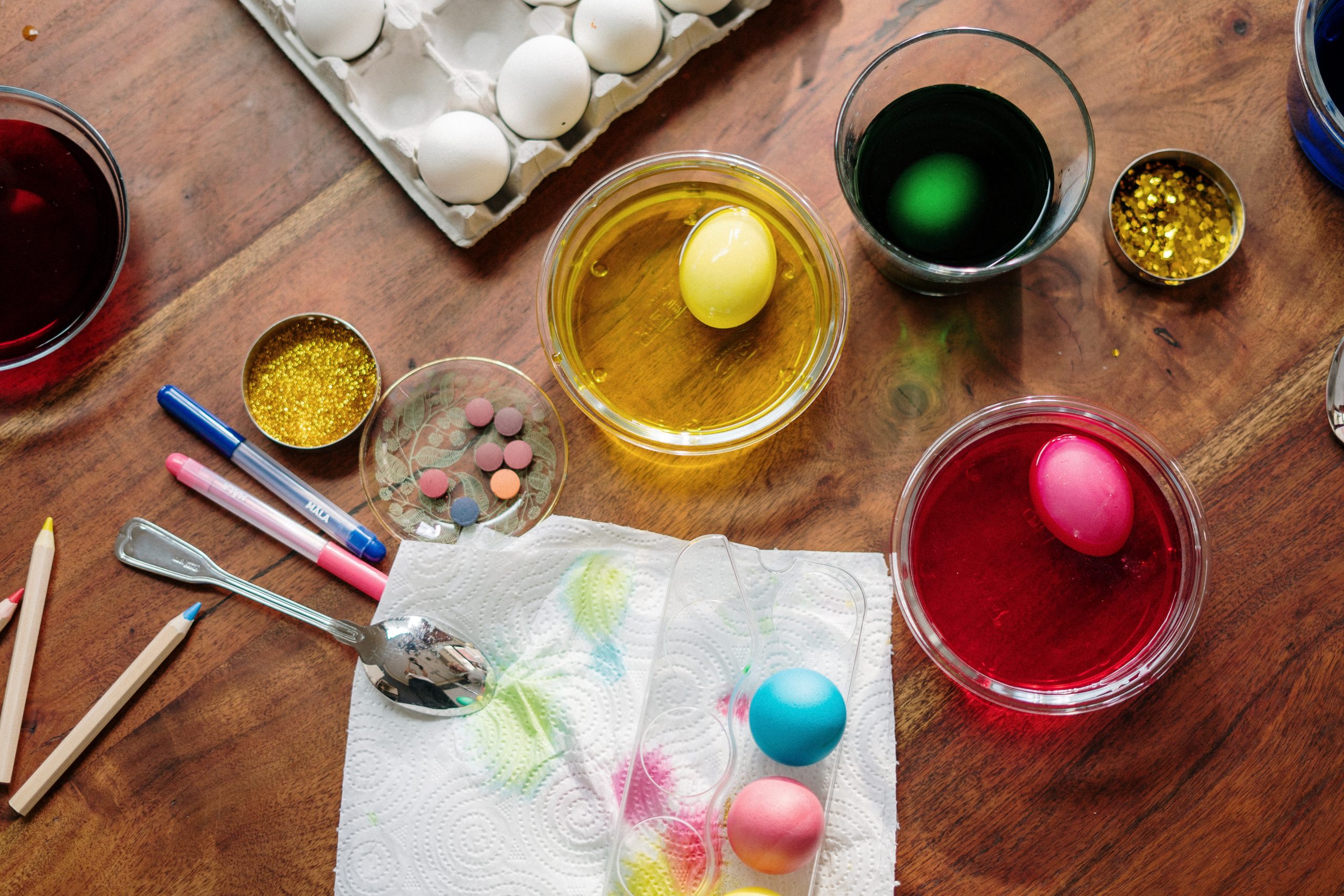Officially it’s the Easter Holiday, and while you and your family would usually be getting out and about and planning exciting outdoor trips, this year, it’s a little different. With social distancing measures in place, we are now having to get a little inventive when it comes to coming up with ideas to keep our children’s minds active while staying at home.
Our kitchens can be a great place to offer educational play and generally have some fun. So we explore some ways of keeping children entertained in your kitchen.
 Cooking and baking
Cooking and baking
Many of us will fondly remember baking a simple sponge or fairy cakes as children as it’s often our first introduction to cooking. Cooking with children offers a wealth of benefits including increasing co-ordination skills, cognitive development and emotional development.
Additionally, for fussy eaters, taking a more active role in choosing and preparing food can help to interest them in a wider variety of meals and tastes. Depending on the age of your children this can range from making simple, no-cook dishes, such as rice crispy cakes (with chocolate melted in the microwave), to more complex meals for older kids and teenagers.
With young children, make sure to focus on keeping safe in the kitchen – explaining about hot ovens, hobs, and don’t forget to model good habits by closing kitchen drawers and cabinets as you go.
For older children, food hygiene and food safety is an important element – so don’t forgo this yourself! Make sure to use separate chopping boards for meat and veg if you can, and keep wiping down as you go.
Understanding flavour
When children first learn cookery skills, it may very much be about being able to follow a recipe. If you have older children at home, why not get a little creative with flavours? Find out what happens if you add a square of chocolate to a chilli? Or raid your kitchen cabinets to find that one ingredient that you’ve never used and then have a look for a recipe to fit around it.
Have some fresh herbs to hand? Why not get the family involved in a blind taste test – and see who can identify the most herbs correctly? Or discover whether you really can tell the difference between your branded and non-branded versions of products (Heinz Beans or ketchup are good options).
 Arts and Crafts in the Kitchen
Arts and Crafts in the Kitchen
There are plenty of ways to get arty in the kitchen. From learning the art of cake decoration to making penne pasta necklaces, turn your kitchen into an art studio for an afternoon.
For younger kids, fun ideas such as making stamps out of leftover potatoes, or even painting rainbows using the humble kitchen sponge are fairly quick but fun activities that can while away an hour or two.
Painting eggs or even making creative shapes using coffee filters can be great fun, and for teenagers, mastering the art of cake decoration feels both fun to do, and with an accomplishment at the end (and lets’ be honest – an Instagram-able opportunity too).
Science
Don’t’ worry, you don’t have to be a science genius (or worry about mini explosions) to teach some science in the kitchen. We’ve probably all watched a video know which shows the science behind making sure to wash our hands using just water, pepper and soap but there are a wealth of safe experiments you can carry out in the kitchen.
Try making colourful crystals using just some Epsom salts and food colouring – just mix a ¼ cup of Epsom salts with a ¼ cup of hot water and the food colouring of your choice and stir into a cup. Place it in your fridge – and after around 4 hours crystals should start to form.
Making Slime or Playdough
Ok ok – we know you may be sick of seeing slime everywhere, but it’s great fun to make! For those who literally cannot bear finding another bit of slime attached to something in your home – playdough may be the better option, so here’s how to make it.
You will need
- 8 tbsp plain flour
- 2 tbsp table salt
- 60ml warm water
- food colouring
- 1 tbsp vegetable oil
Method
- Mix the flour and salt in a large bowl. In a separate bowl mix together the water, a few drops of food colouring and the oil.
- Pour the coloured water into the flour mix and bring together with a spoon.
- Dust a work surface with a little flour and turn out the dough. Knead together for a few minutes to form a smooth, pliable dough. If you want a more intense colour you can work in a few extra drops of food colouring.
Keep it fresh by storing in the fridge in a plastic sandwich/freezer bag or by wrapping in clingfilm.
However you want to keep your kid’s minds active, the kitchen can be the perfect place. Always follow safety rules – and see our great guide to keeping your kitchen safe for children for tips.







